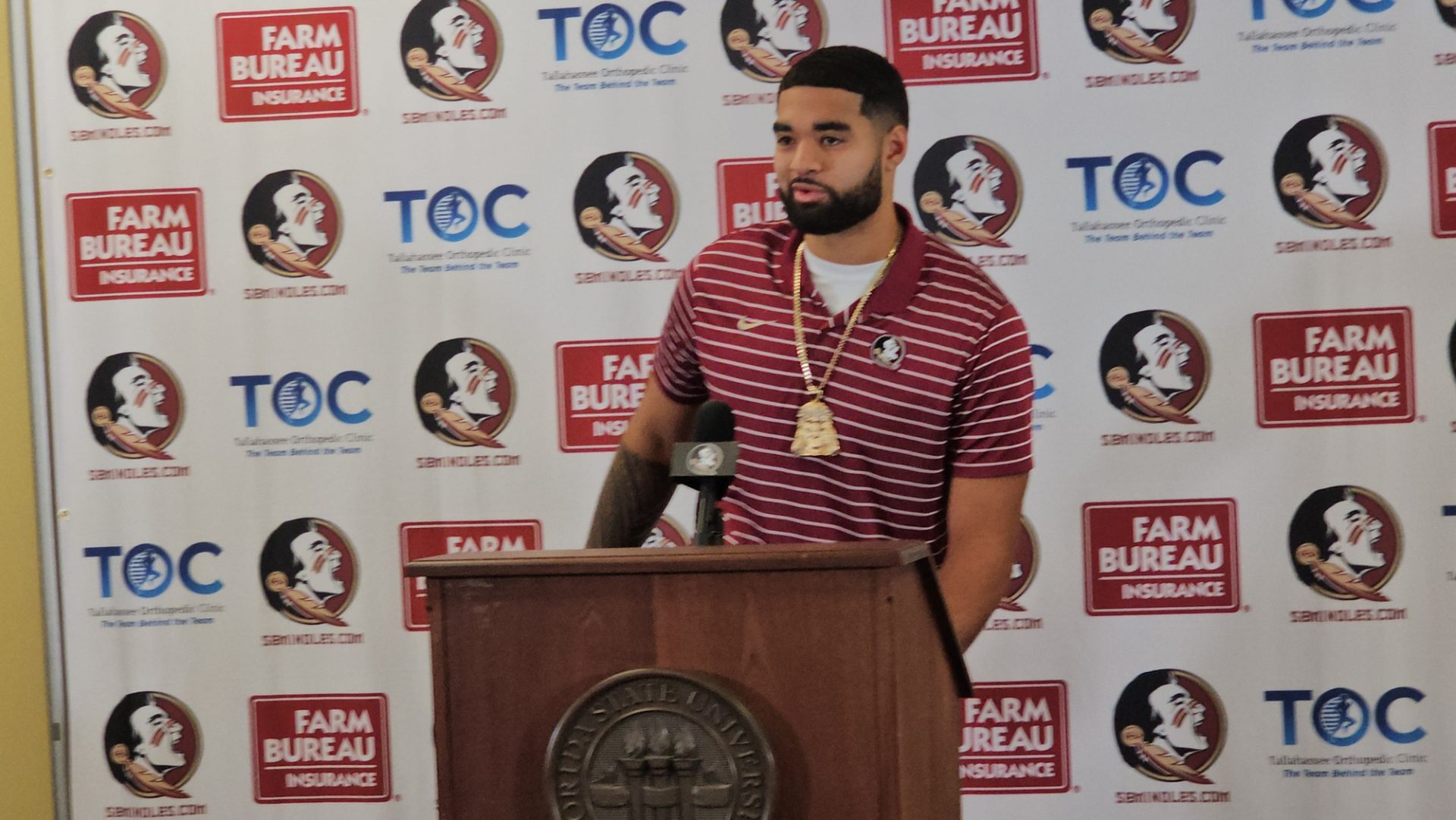The introduction of the transfer portal allowed college football players to seek better opportunities elsewhere, similar to coaches. However, the entire landscape changed in 2021, as athletes were allowed to begin earning money through their Name, Image, and Likeness (NIL). What does that mean for schools and athletes maneuvering in the portal?

What Is College Football’s Transfer Portal?
The transfer portal is an online database that includes student-athletes’ names in every sport at the Division I, II, and III levels. Players enter the portal through their school’s compliance office, allowing them to explore their options and move to a different school without losing their eligibility or scholarship. Additionally, coaches are able to recruit players from the portal without violating the NCAA’s rules and regulations.
The governing body launched the transfer portal in 2018 to streamline the transfer process and offer transparency for players and schools. Prior to its inception, players had to receive permission from their program to contact outside schools and coaches.
Oftentimes, their current coaches restricted where they could go. For example, during Urban Meyer’s time at Florida, he didn’t allow players to transfer in-state or in-conference, forcing them to seek opportunities in unfamiliar places.
The portal’s inception was a boon for the sport, as player movement generates buzz for fanbases and adds a new element to roster management. But it hasn’t come without its faults.
How Does the Transfer Portal Work?
Currently, there are two transfer portal windows: winter (from early December to early January) and spring (a 15-day period that begins and ends in April). Athletes must enter the portal during either of the two windows, be academically eligible, and meet progress-toward-degree requirements to be eligible to play at their new school.
However, graduate transfers (athletes continuing to play after earning their bachelor’s degree) are able to enter the portal at any time. Players in the portal can choose their next school at any point after entering, as they are not beholden to either window’s closing.
KEEP READING: What Is NIL?
Additionally, they can remove their names at any time as long as they have not signed a financial aid agreement elsewhere. There is no restriction on the number of portal entries by a single player, and in April 2024, new legislation was passed giving athletes unlimited transfers.
Of course, players cannot transfer midyear or play for a second program in the same season. Before the new rule change, the NCAA offered a one-time free transfer, allowing athletes to play immediately at their new school. But they would need to sit out a season — or apply for a waiver — if they transferred again in the future.
Notable College Football Transfers in the Portal Era
Player movement in the transfer portal era has impacted the sport in momentous ways and offered players the opportunity to showcase their talents rather than suffocate on the bench. There may be no better cases than these:
- Joe Burrow: Following a QB battle against Dwayne Haskins at Ohio State, Burrow transferred to LSU in 2018, led the Tigers to a national championship, won the Heisman Trophy, and broke several NCAA, SEC, and team records.
- Justin Fields: Tired of backing up Jake Froom at Georgia, Fields took his talents to Ohio State in 2019. He powered the Buckeyes to two consecutive College Football Playoff appearances and finished third in the Heisman voting in 2019 and 2020.
- Caleb Williams: After shining as a true freshman under Lincoln Riley at Oklahoma, Williams followed the head coach to USC in 2022. Channeling his inner Patrick Mahomes, he threw 42 touchdowns and only five picks en route to the Heisman Trophy in his first year in LA.
- Jalen Hurts: Hurts’ time at Alabama is well-documented, as he lost the QB1 job to Tua Tagovailoa during the 2017 National Championship, as the latter led the Crimson Tide to a comeback victory over Georgia. Hurts spent a season backing him up but then joined QB guru Lincoln Riley in Norman, and as they say, the rest is history.
- Jayden Daniels: Daniels made his name as a scrambling dual-threat at Arizona State but left for LSU to “showcase my talent on a national stage.” He did just that over two years in Baton Rouge, leading the Tigers to back-to-back 10-win campaigns to begin the Brian Kelly era and winning the Heisman in 2023.
College Football Network has you covered with the latest news and analysis, rankings, transfer portal information, top 10 returning players, the 2024 college football season schedule, and much more!

